7 th June , 2019
Multidisciplinary artist Derrick Adams discusses the power of symbolism, and underrepresented concepts of normalcy within contemporary art.

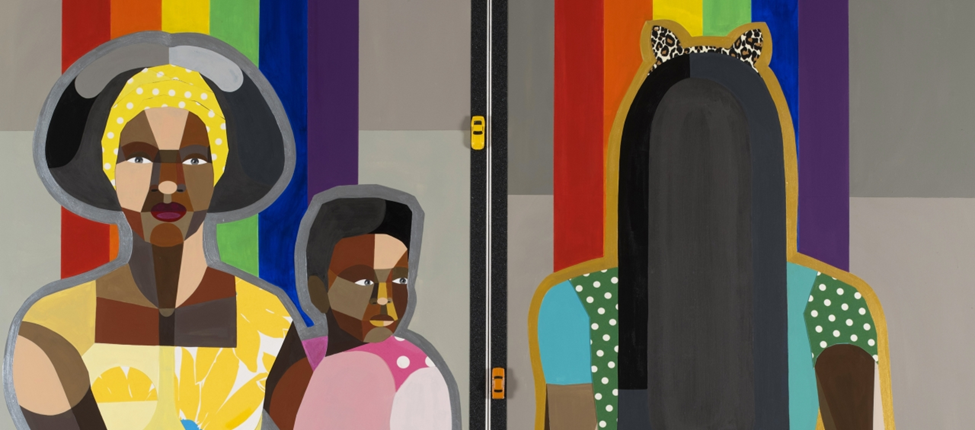
On May 31st, the bold and powerful imagery of Derrick Adams filled the space of Rhona Hoffman Gallery (Chicago) highlighting his most recent work. Art enthusiasts were eager to meet the artist who spent the evening greeting attendees and graciously answering the questions of admirers. The Ins and Outs: Figures in the Urban Landscape, presented new paintings of the ongoing series Deconstruction Worker, that began in 2010. For this iteration of the series, Adams examines nuance and intimacy within black urban life, by expanding subtle gestures, and happenings, to large scaled compositions, elevating quotidian life to saintly tableaus.
One of the attendees mentioned, “I’ve seen Derrick’s work several times, but there is something about the eye contact of the figures in these particular paintings. It’s like they are looking past us. Their gaze seems to be somewhere else, even though their faces are positioned straight ahead to look at us. It’s like they are subtly resisting our gaze. That’s very powerful!”
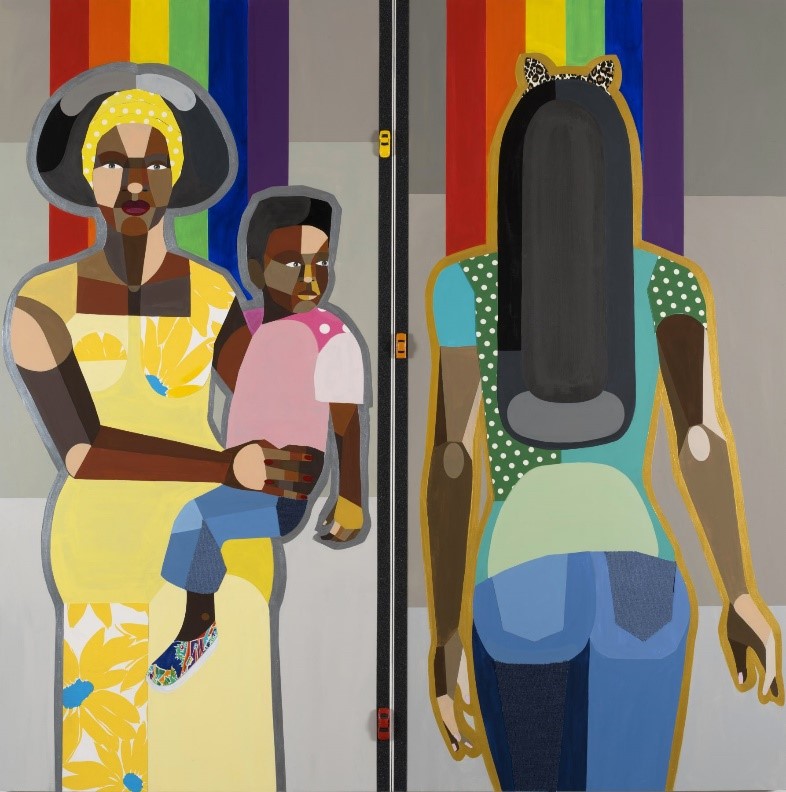
The subtle resistance of the gaze mentioned by the gentleman attendee at the opening is depicted notably in Figure in the Urban Landscape 32. Here, Adams deploys a kind of anti-portraiture by only giving the viewers access to the back of the figure on the right. This move skews the identity of the figure, and the viewers desire to project a personality, and extract an interiority from the figure, in a way that is usually experienced while walking behind someone on a busy street. The streetscapes with their rough textures evoking asphalt appear as grids, further deconstructing the fractal bodies that appear as celestial beings, rather than accessible humans.
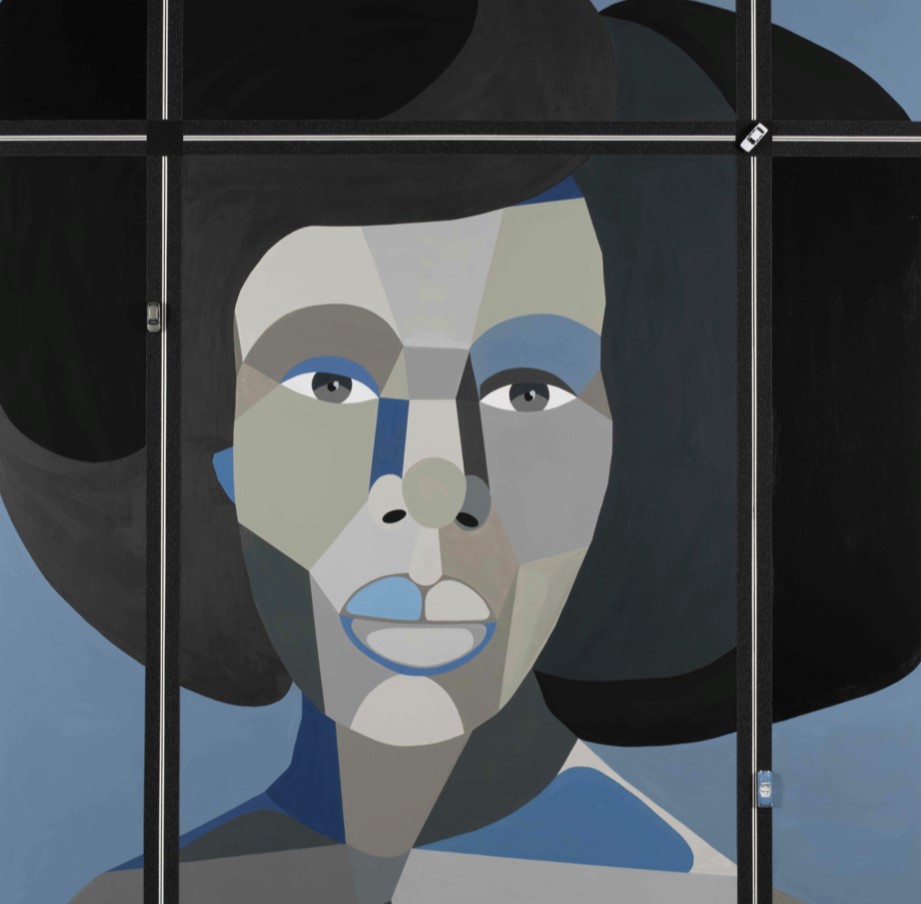
I asked the prolific artist to explain his process of making the paintings of his latest show to the readers of ArtX.
“When I’m working in my studio I’m always thinking about formal execution, and in this case, how the formal execution can have some symbolic nature, like what’s seen in Western religious paintings or even some spiritual objects of traditional African artifacts. This is important because most people look at the formal attributes of African art, without thinking of how many of those attributes are created through spiritual and religious practices. The things that you see when you look at those abstractions and cubic forms are exaggerated for a reason. So, with the work that I make, I think about how to really capitalize off the formal elements of painting or sculpture, but also how to be connected to the compelling spiritual elements of traditional (African) objects,” Adams explained.

Unlike the other work of the series, for this show, Adams decided to embellish more on the subjectivity of the figures within the urban landscape. In some of the paintings of the show, he added these halo-like auras around the figures.
“The auras for me, are just what I see when I’m walking down the street with people. I see the black figure not just only being in its own space, but embodying so much history, like a holy being or a deity. Like seeing a single mother walking down the street with a baby that’s such a powerful thing!” Adams explained.
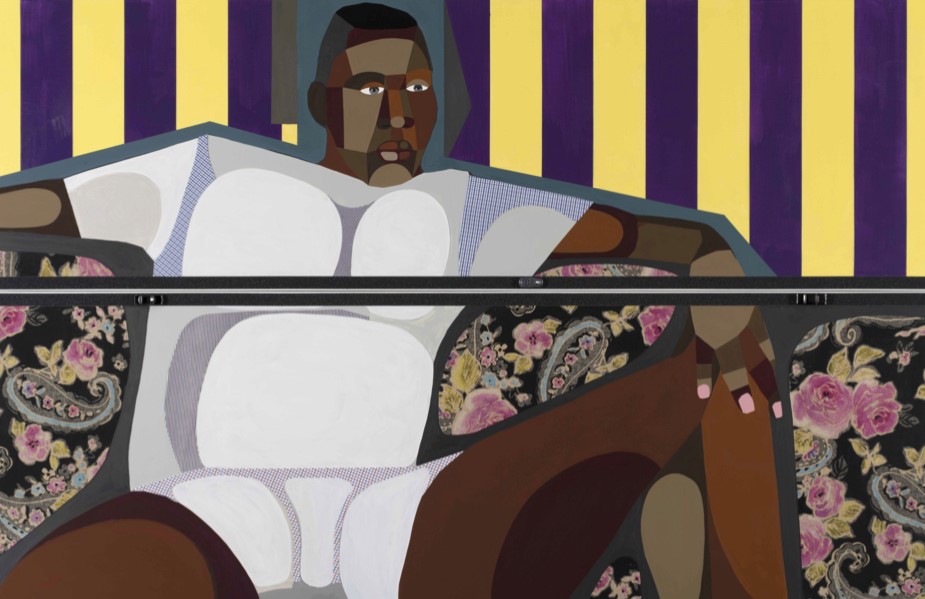
A different gentleman attendee started conversing while we viewed Figure in the Urban Landscape 29 closely. Immediately we connected over elements of the image that referenced a collective sense memory, the print of the sofa, and the stark white underwear, better known as tidy whiteys, that we both acknowledged as being a “black man thing”. We talked about the gaze of the figure in this painting, and assumed the figure is watching a “real good” basketball game on tv. Then, we imagined the television that was in the room, an old-fashioned kind with a large decorative wood frame, with family photos, the kind of interior we associated with our grandmothers’ living rooms.
“With these works, I was thinking about how important it is for us not to always see ourselves in a way that is entertaining, but to allow people to see a glimpse into our reality and the normalcy of how we live,” Adams said.

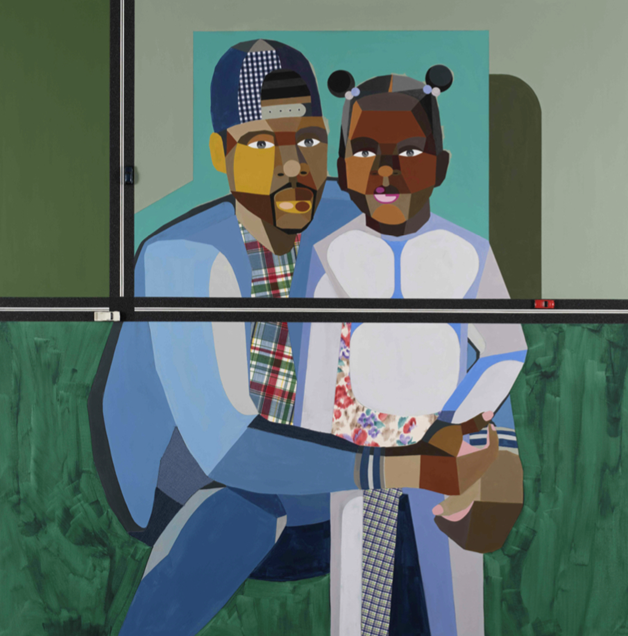
“There are works by other artists that portray black people in a very theatrical way, and sometimes artists don’t understand that they are creating an image of drama that is not necessarily embodying a very multidimensional representation of blackness. But I think the most important thing about black people is, we exist in this space of normalcy in our daily life. I think it’s important that we are enabled to see this idea of being normal or just existing as human, and that we experience it. And I like to capture those elements of normalcy in my work,” Adams said.


For this show, Adams stuck to his signature style of mainly bright, vibrating colors, appearing as rainbows and the refracted light of prisms. Adams frames his subjects with grid-like abstracted city streets, and diecast miniature model automobiles protruding from the flat painted surfaces. The city grid references the systemic architectural containment of black bodies within urban spaces.
“Every space we’ve lived in historically has been designed to keep us contained,” Adams said, as he explained his use of cars and the grid motif. “And how to keep us not wanting to leave, entertained with this false sense of neighborhoods that we feel confound to. Neighborhoods that were created for us to stay in. So with this work, I’m discussing different ways of how we can inhabit space, and how we are not limited to these oppressive boundaries that have been designed for us,” Adams said.

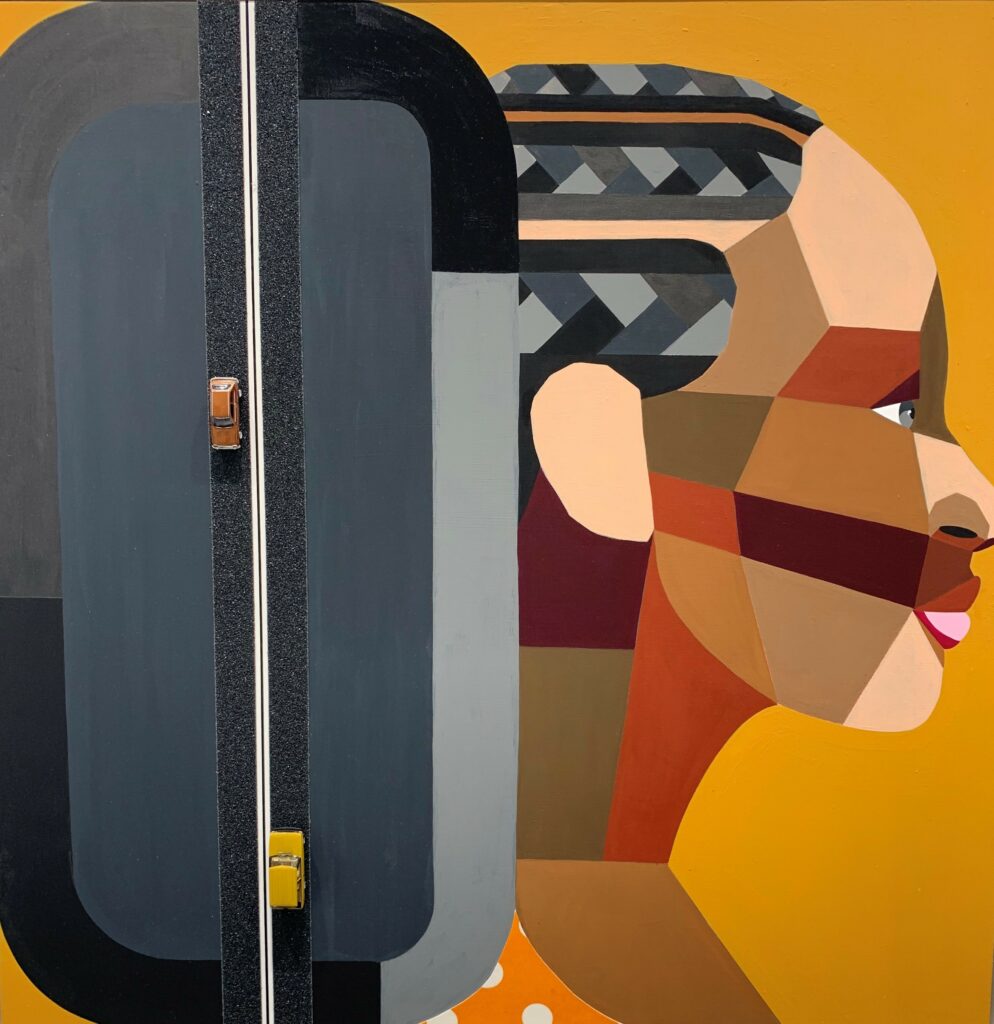
Before Derrick Adams returned home to Brooklyn NY, I asked him how his choice of mediums within this ongoing series help to promote his artistic point of view.
“Because paintings can create levels of illusion, I want my paintings to show certain attributes of the figure that are not always immediately seen on the surface. I want these attributes to be promoted within the materiality of the work. The mixed media painting and the grid signifies how we are kind of framed by these very rigid streets, but we’re not a rigid people,” said Adams.
The Ins and Outs: Figures in the Urban Landscape is showing until July 6th, at Rhona Hoffman Gallery Chicago
About the Artist

Born in Baltimore, Maryland, Derrick Adams is a Brooklyn–based, multidisciplinary artist. He received his MFA from Columbia University, BFA from Pratt Institute, and is an alumnus of the Skowhegan School of Painting and Sculpture and the Sharpe-Walentas Studio Program. He is a recipient of the Joyce Alexander Wein Artist Prize, Louis Comfort Tiffany Award, and Agnes Martin Fellowship. He has exhibited and/or performed at MoMA PS1, Brooklyn Museum of Art, PERFORMA, Studio Museum in Harlem, Brooklyn Academy of Music, The Metropolitan Museum of Art, The Museum of Arts and Design in NY, and Museum of Contemporary Art Denver. His work is in numerous institutional collections, including the Studio Museum in Harlem, Metropolitan Museum of Art, and the Whitney Museum of American Art.